MagAO is back in town. We have returned from our conferences in Florence (AO4ELT) and/or Victoria (IAU 299 exoplanets) to get down to serious work on our papers we presented at the conferences, and our plans for the next year. Our talks and posters went over well, and we got a lot of requests about how to get MagAO observing time. Institutes that share Magellan telescope time are the Carnegie Institution of Washington, Harvard University, MIT, the University of Michigan, and the University of Arizona. Check with your collaborators at those institutes and keep an eye on this blog to find out about plans for the next MagAO observing run.
Some of our observing partners also presented MagAO results at the IAU symposium. Here are our Arizona State University friends Jenny Patience, Rob De Rosa, and Kimberly Ward-Duong posing by Kim’s poster:
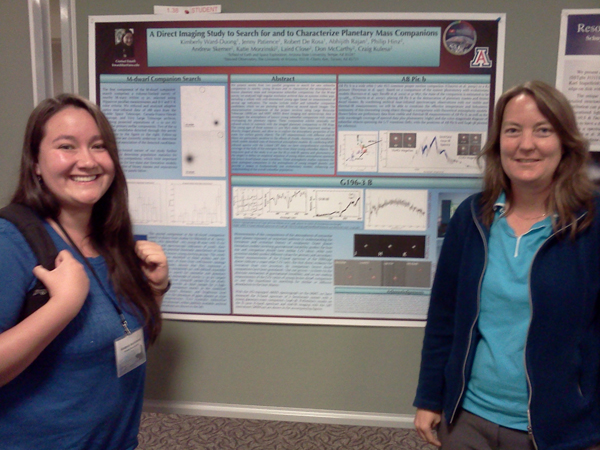
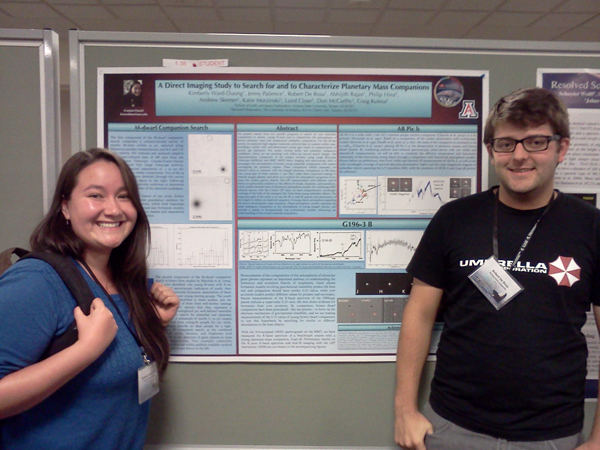
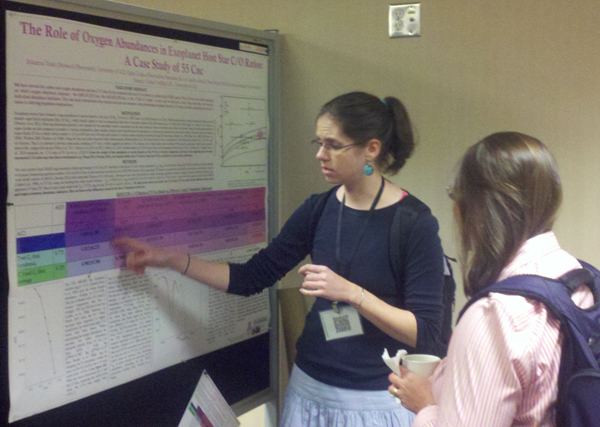
We also saw Emily Rauscher there, the first Sagan Fellow at the University of Arizona:
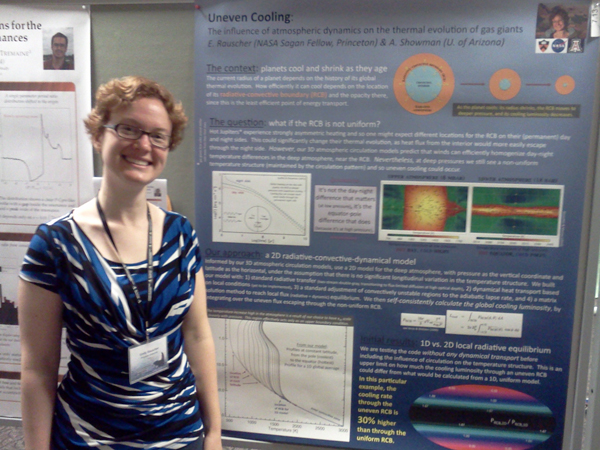
We took a few other pictures of our friends’ and collaborators’ posters but they got corrupted. Anyway, we hope you enjoyed those tidbits of the conference.
Finally, here’s a great picture of Jared and Alfio from the AO4ELT conference, in the place that started it all:
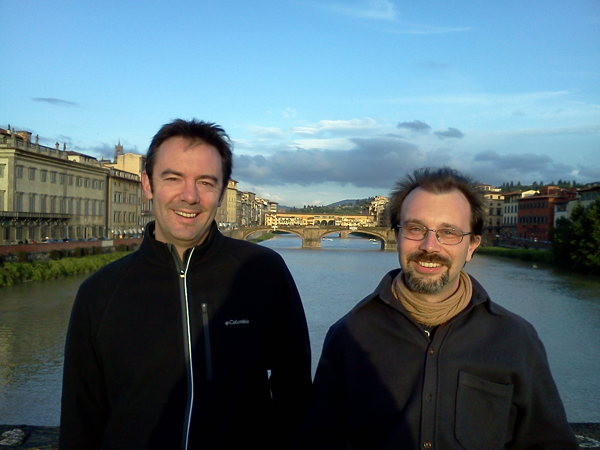
Speaking of MagAO’s software engineers, somehow this hasn’t yet gotten posted to the blog, but Alfio modified some code last run so that we can save and watch the turbulence in real-time as it blows across the ASM. Here it is, it’s really cool to watch!